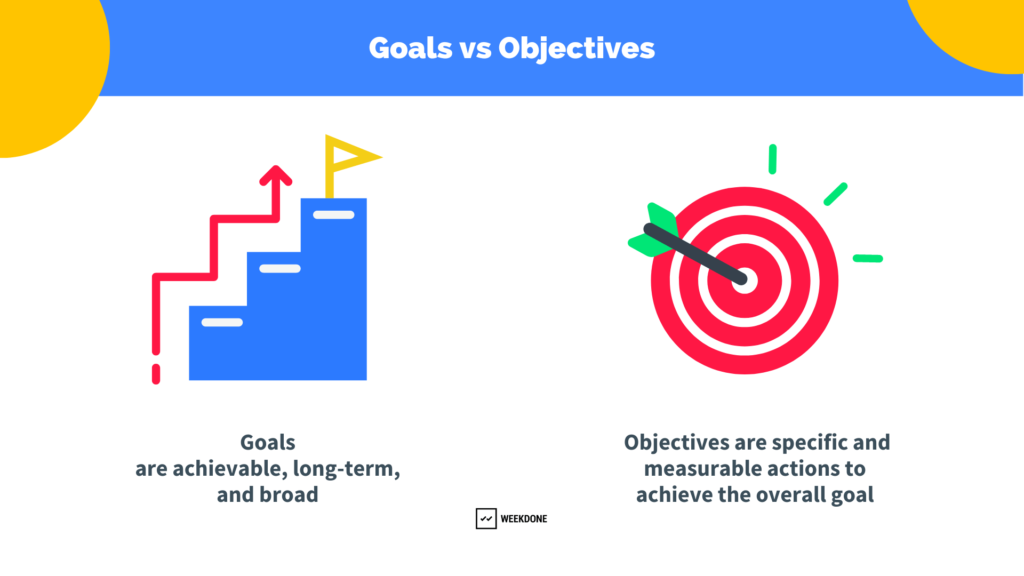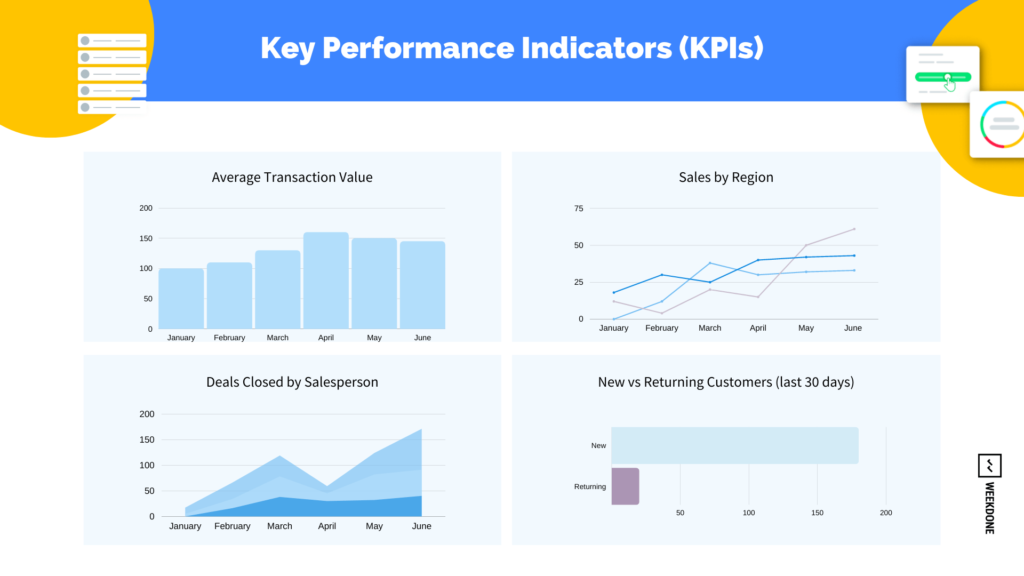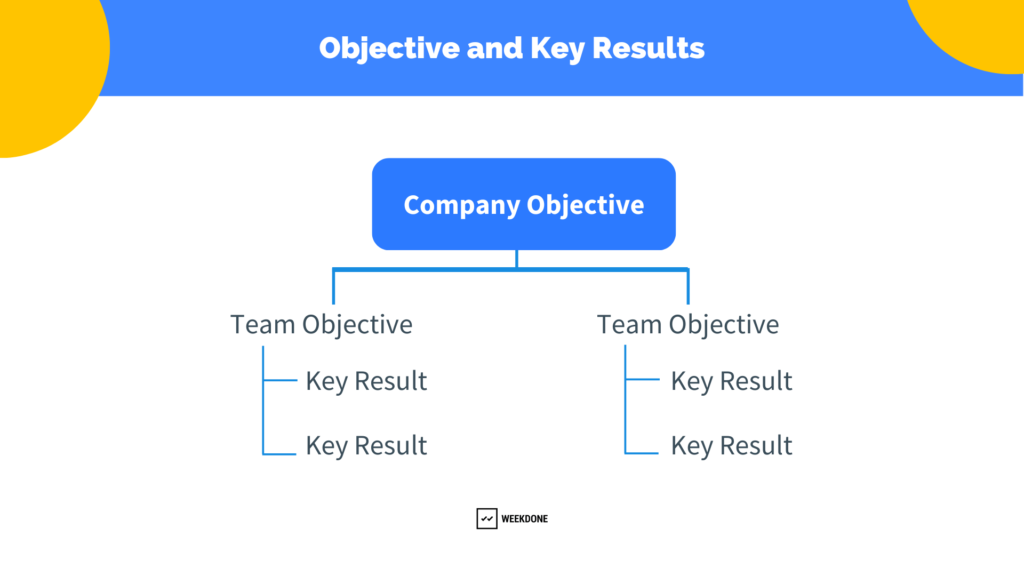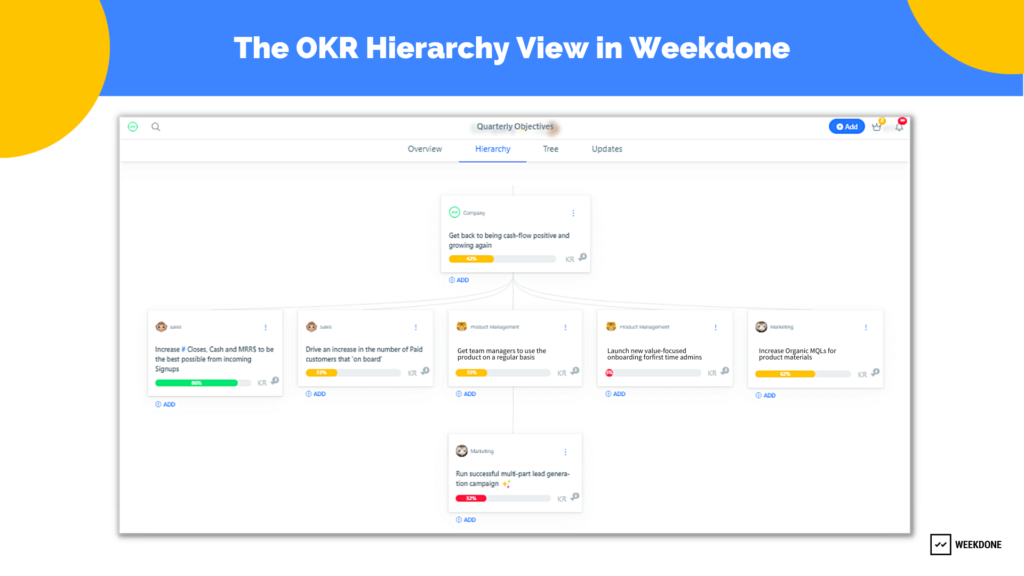Many organizations spend a ton of time and energy in order to set the goals and objectives that keep their company moving. It’s often quite difficult to set business goals.
A 2022 study conducted by the Columbia Business School stated that, despite roughly 70% of organizations saying they use employee empowerment practices, that claim is likely a gross overestimate considering how little organizations involve their employees in the goal and objective setting processes.
What things should you prioritize? What kind of figures are you aiming at? How do you get your employees involved?
From contributing to your long-term career progression to helping you set new skills to meet targets, we’ll teach you how to set great business goals and objectives to help your company grow.
What is a Goal vs. Objective?
When differentiating the terms: goal vs. objective, it can get hairy since there is a lot of overlap between the two.
For the purpose of this article, we’ll focus on setting goals and objectives in companies and teams.
The main commonality between the two is that whether you’re talking about a goal or an objective they will both describe some target that you want to achieve.
What is the difference between a goal and an objective?
The difference between goal and objective usually boils down to specificity and measurability.
Goals are often achievable, long-term, and broad. A company might use high-level goals to set the direction for, or inform the yearly strategies for each department.
When setting a goal, you don’t immediately consider what the actual details of obtaining them are, but instead, focus on your aim or output – filling in the actionable details later.
An objective, on the other hand, defines specific and measurable actions that each team or employee must use to achieve the overall goal.
Objectives are often more specific and short-term. If your company has an overall goal of becoming an industry leader in your field, your objectives would be how you can see that realized on a quarterly or yearly basis.
Keep these definitions in mind when you’re setting goals and objectives for your business.
Examples of Goals and Objectives
Remember: The goals of a business are usually phrased in a short and sweet way that details the general trajectory for your company.
Business goals examples
- Maximizing net profit
- Becoming an industry leader in your field
- Obtaining brand loyalty from desired consumers
- Providing top of the line service
Since Objectives are more specific and usually have specific teams or departments in mind, they should give more context and measurements on how your employees and teams can achieve them.
Similarly to goals, the Company Objective should be phrased in a way that empowers your teams.
Strategic objectives examples
- Increase company market share
- Improve employee input by conducting 1:1s once a week
- Increase overall conversions through all channels
- Increase completion of weekly tasks by deadline
Types of Goals
When looking at the goals vs. objectives examples, you might wonder if you should set your goals for a quarter, year or five years.
Well, goals can usually be divided into two main categories: short-term and long-term. Such time-based goals focus on the time you allocate to working toward that finish line.
- Short-term goals are the ones your team plans to accomplish in the near future. This is usually one quarter but may extend to two quarters or even a yearly goal.
- Long-term goals are those that require more extensive planning so you can map out the steps needed to achieve them. Within your company goals and objectives, this can be as short as a yearly goal or as long as the goals of the business have existed. This is especially true when thinking of why you formed the company in the first place.
Types of Objectives
If we think of objectives as the steps you take to reach your goal, then these objectives link to the kind of goal you set. However, since objectives are generally designated to a specific team or department, it is easier to think of objectives based on the makeup of your company.
These include:
- Sales Objectives
- Marketing Objectives
- IT Objectives
- Quality Management Objectives
- HR Objectives
The nature of these objectives will vary depending on the department/team.
For example, a Sales team will want to set objectives that track outcomes like: the number of sales closed, cross-selling, lead generation, and the quality of leads.
The Marketing team may have objectives that focus on brand engagement, brand recognition, customer satisfaction, and market research.
For each of these focused outcomes, team members will have to consider the measurable steps they’ll take, or metrics to track to achieve the end result.
How to Measure Goals and Objectives?
Measuring is key to achieving company goals and objectives. However, goals aren’t usually inherently measurable. This is why you need to set measurable objectives and define how you’re going to measure the success during your agreed upon time frame.(This is where things like KPIs and Key Results come in!)
Important note: matter how you choose to measure your objectives and your goals, you need to ensure that everyone is measuring progress based on what they’re actually seeing. And to do so often. Trusting your gut doesn’t really work well as you can easily lose sight of the big picture.
Let’s take the Sales team example, say you want to improve your email conversions, the number of cold calls you do wouldn’t count as progress towards that specific KPI or Key Result since it has nothing to do with emails.
This is one (of the many) benefit of OKRs – through setting Objectives with Key Results, you’ll motivate individual team members to plan activities that have an impact, rather than completing tasks that won’t drive change.
Free 14 day trial for unlimited users – learn more
Let’s dive into the different ways on how to measure goals and objectives in your team:
Using KPIs
KPIs are probably the most well-known way to quantify long-term performance both in terms of objectives and larger goals. Likewise, KPIs help you get a good picture of where your company is at in relation to the competition.
Like Objectives, KPIs are usually department or team specific, but are broken down into three categories:
- Financial KPIs
- Customer-focused KPIs
- Process-focused KPIs
Financial KPIs can include anything from net profit to generated revenue to looking at stakeholders.
Customer-focused KPIs focus on customer satisfaction, how easily customers interact with staff or the product, and the ability to retain customers.
Process-focused KPIs evaluate how long something takes to get done, how much it will cost, and the quality of the overall output.
Using SMART goals
In case you need a refresher, SMART goals stand for:
- Specific: making sure your goals are well-defined, clear, and focused.
- Measurable: ensuring you have specific criteria to measure overall progress.
- Achievable: not impossible to obtain.
- Realistic: relevant and within reach.
- Time bound: making sure you have a clear timeline including both start dates and end dates.
Generally, you’ll want to ensure everyone uses the basic journalist questions to ensure your SMART goals are specific and measurable. (Who, what, when, where, why?) Think about who is involved in a goal, what you want to accomplish, where the goal will be achieved, when it will take place, and why it is important to your team, department, and company?
By asking these questions, you’ll embrace the discussion time with your team and likely come up with innovative ideas you didn’t consider before.
Likewise, you will want your teams to consider how much progress is going to be made during the time you set. This may look like defining metrics like, how many (of whatever variable you plan on using) will you need, and what percent completion quantifies your success?
👉 You’re welcome to download our free SMART goals worksheet
Using Balanced Score Card
A balanced scorecard (BSC) is a management system that works to improve internal processes within teams in order to increase external outcomes. By taking a high-level goal and breaking it down into various performance objectives, the method has become popularized since it encourages individuals’ and organizations as a whole to improve, starting from within.
There are 4 key areas for BSCs:
- Learning and growth: for training and learning resources available to staff.
- Business processes: for how products are manufactured or how services are offered.
- Customers: for overall customer satisfaction based on quality, price, and availability.
- Finance: for sales, expenditures, and income.
The benefit of BSC is that all information is webbed together at once. All of these different categories can be measured and assessed in relation to one another. That way, managers can identify what’s holding back business performance and make appropriate changes moving forward.
Using OKRs
The Objectives and Key Results methodology (OKRs) is a business management framework that helps you set strategic objectives. OKRs, likewise, serve as a guide for creating meaningful business goals and objectives.
With OKRs, you can set various high-level goals at the company level. From there, different departments and teams can assign themselves OKRs that align with that company Objective. Team objectives and key results should be planned on a quarterly basis.
You need to ensure your objectives are motivating and aspirational. They should be achievable, but not too easy. If you’re achieving 100% of your objectives, then you need to be setting more ambitious ones. You should usually aim for the sweet spot of a 70% achievement rate.
🤓 Read about aspirational and committed OKRs here
The key to your Key Results is that they must be measurable. Instead of stating that you want to increase conversions via email campaigns, you should specify what percentage of overall conversions you want to be from email campaigns or a target of how many conversions from email campaigns you want to reach.
👉 The best way to manage your OKR goals is by using a designated OKR goals software.
❗️ OKR beginners may want to try a free OKR template available in excel/google sheets.
5 OKR Goals Examples
Here are some OKR examples to help you understand how to set goals and objectives:
Goal Example 1:
Objective: Become an industry leader in bookkeeping software
- KR: Increase site visitors by 5,000 per month through increased SEO optimization
- KR: Improve product accessibility and offer 2 new package deals to support independent beekeepers as well as larger honey farms.
Goal Example 2:
Goal Objective: To be known to the public as the #1 platform for tracking clothing brand sustainability and sourcing in the US
- KR: Rank pages on the most sustainable clothing brands on the first page of Google (top 10)
- KR: Create the ultimate cornerstone article on 2022’s most and least sustainable mainstream clothing brands
Goal Example 3:
Objective: Create the lowest carbon footprint in paper production
- KR: Supply chain and shipping systems incorporate 100% zero waste policy
- KR: Ensure 80% of all products are compostable
Goal Example 4:
Objective: Make the company an industry leader in innovation
- KR: Land within the top 5 of either Venture Atlanta’s or The American Business Review’s most innovative startups for 2022
- KR: Double the number of job-seekers our recruiters reach out to with paid technology training
Goal Example 5:
Objective: Increase the company’s financial longevity
- KR: Reduce team fund variance from 10% to 5%
- KR: Spend 80% of grants from prior fiscal years
👉 You can find more OKR examples here and a comprehensive guide on how to set good OKRs.
Set Effective Goals and Objectives for Your Team with OKR Software
Despite the fact that goals and objectives are often used interchangeably within the business world, it is still really important to highlight the distinctions between the two.
Goals are meant for setting the overall company direction and they could be either short or long terms ones. Whereas objectives are good for narrowing down the goal and specifying how the goal could be achieved with a more practical approach.
The best way to ensure that everyone is on the same page when setting company objectives is to use goal-setting software. All goal-setting tools are different and have their own goal tracking methods, framework, and set of features. One of the most transparent and aspirational goal-setting software is an OKR-based tool.
Weekdone, for example, offers weekly planning on top of OKR software so all your business management practices are in one place. Likewise, Weekdone offers coaching free to any of its users so everyone within your company feels prepared to move to a new tool.
At the end of the day – the most important thing to remember about setting goals and objectives is to facilitate collaboration while working hard and efficiently – and having the results that prove it!
Interested in an OKR software to set more active goals across your company? Book a demo with our team to learn more about Weekdone and see if it’s for you!




